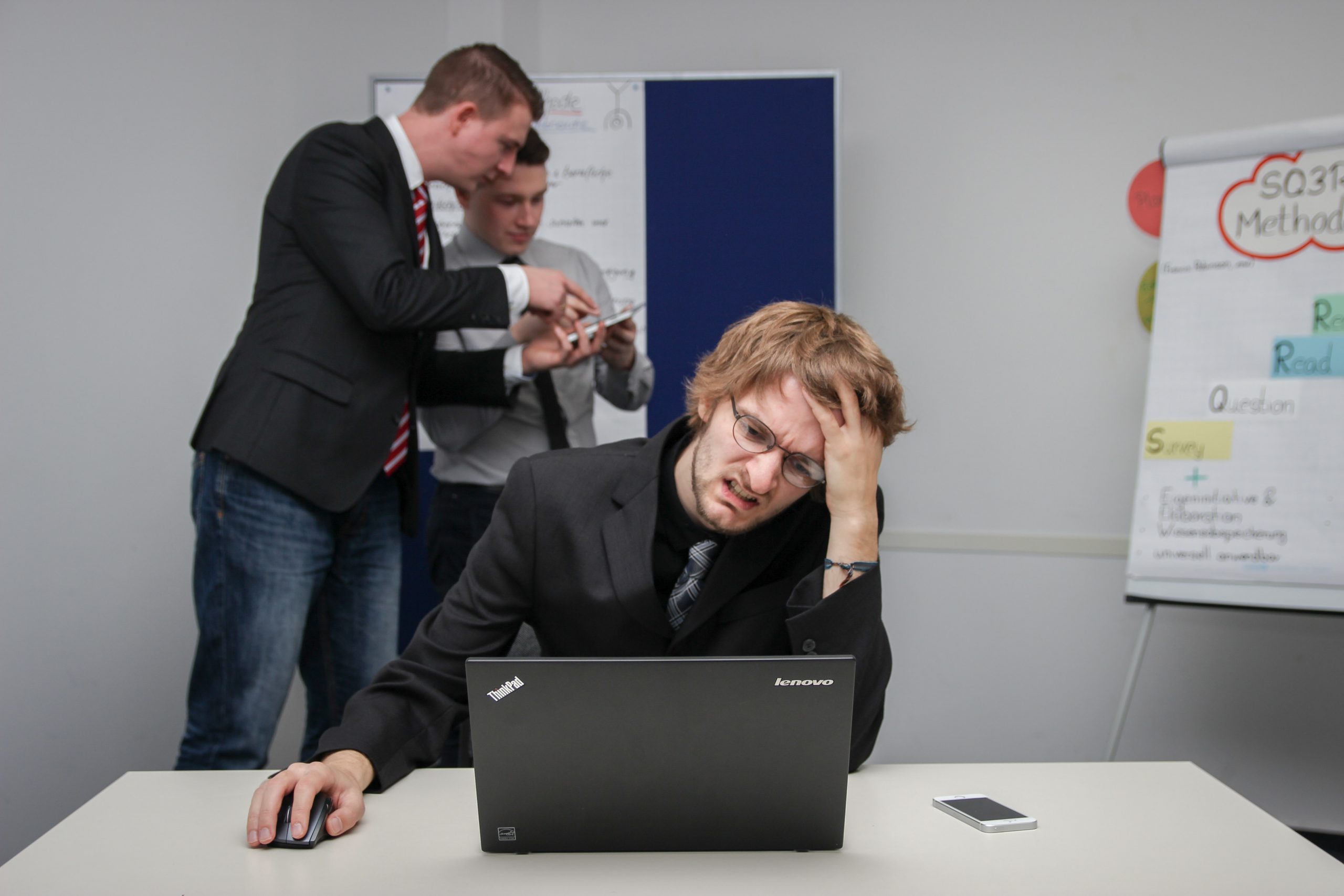The pandemic has altered the work environment across industries. The way of working in a corporate environment has undergone massive changes, and it seems these changes are here to stay. Before 2020, for working people, going to the office daily was a norm and the office environment was an instrument of increasing employee productivity. But the Pandemic has changed everything. Remote working has now become the new normal and a secluded work environment has become the principal. This has led to large-scale employee burnout.
Key organizational experts have noted that employee burnout stems from uncertainty. Whether people should wear masks or not? Should they restart working from the office after vaccinating? This constant uncertainty has been primarily responsible for employee burnout. Zoom Calls and Online Conference Meets have replaced physical work settings. The hiring of employees has also shifted to an online mode with interviews taking place on Cloud Platforms. The cross-functional interactions of the various teams have practically come down to zero.
Given the situation, Stress, Anxiety, and Depression have been on the rise. It has been further accentuated with intrusion into Employee’s Privacy as they continue to work from home thereby leading to employee burnout.
In this blog, I will walk you through:
What does Employee Burnout refer to?
Since the pandemic began, employees have been forced to work from home. A personal touch to their work and a collaborative environment is missing. They are working in a secluded manner. They are unable to interact with their office colleagues. Lack of mutual exchange of ideas has led to redundancy and an increase in employee stress. This condition is referred to as Employee Burnout. Burnout is on the rise. Over half (52%) of survey respondents are experiencing burnout in 2021—up from the 43% who said the same in Indeed’s pre-Covid-19 survey. And at 54%, more than half of Gen-Xers are currently burned out—a 14% jump from the 40% who felt this way last year.
Employee burnout is a considerable state of psychological and emotional stress or depression. It is caused when employees undergo prolonged periods of stress and anxiety. Due to this work pressure, employees might even decide to resign from the company. They would search for alternate opportunities, especially where the work environment is good. Burnout is not a disorder that requires diagnosis. Employers can play a crucial role in reducing employee burnout. They can engage employees through many employee engagement activities.
Signs and symptoms of emotional burnout for employees
Certain organizational indications point to employee burnout. Inefficient work and delay in project submissions are some of the prime signs and indications. You should go to the root of the cause. Identify the reason behind this delay. Following signs and symptoms in employee behavior can help you identify emotional burnout or employee stress:
Anxiety or irritability
Irritability can take place because of inefficiency in work. At times your employees may find it difficult to get along with others. Personality clashes can also take place on a large scale. Anxiety or Stress is the resultant effect. Therefore you should mentally support employees and help them go through such difficult times.
Depression
Workplace depression is a common sign of employee burnout. At times you may find your employees exhausted and tired. This may happen due to a lack of sleep. A crisis in their personal life may also be the cause of mental depression. You should lend your support during such times and encourage the employees.
Panic attacks
Panic Attacks are caused due to increased employee burnout. It may happen when employees are overstressed. They become sleep-deprived. Such circumstances may lead to acute physical and mental disorders. Things at times go to such an extreme that employees encounter panic attacks. They may even become unconscious or experience heart-related disorders.
Sadness
Finally, sadness is one of the prime indicators of employee burnout. If your employees do not receive adequate recognition of their work, they may not remain motivated. They can experience detachment from colleagues and the organization. Under such circumstances, you should make an effort to cheer them up. Help them find ways to make the workplace interesting.
Why Employees Burnout in the Workplace?
Employee burnout can be detrimental to the emotional and physical well-being of the employees. Long work hours can make employees tired and exhausted. Fatigue can soon translate into detachment from work. Lack of motivation can lead to depression resulting in heart disorders and mental diseases. Employee burnout can also lead to the employees leaning on unhealthy eating habits, binge drinking, and overreacting.
The pressure at work
Work Pressure is harmful to the mental and physical well-being of employees. At times organizations resort to putting excess responsibility on the shoulders of the employees. They may buckle down under intense pressure. This may lead to committing mistakes and errors resulting from a lapse in concentration levels.
Unfair treatment with the colleagues
At times office employees are subject to unfair treatment. Manager’s bias creeps into the way some employees are treated. While others are left high and dry by their superiors. This kind of unjust treatment might make the employees feel less valuable to the organizational goals, objectives, and prospects. Inclusivity, therefore, must be practiced thoroughly by team managers when it comes to employee communication.
Lack of support
It is the responsibility of the managers to support their subordinates. When the managers abstain from doing this, they let go of the emotional bond between them and their subordinates. The employees may feel let down and thereby may detach themselves from the organization’s operations. Therefore supporting the employees through thick and thin, understanding and resolving their problems becomes very important.
Poor leadership
Finally, Poor leadership is one of the primary causes of employee burnout. A good leader is someone who can guide and not just resort to instructing their team members. A leader needs to motivate other employees and make them feel that they are an important part of the team. There are times when managers resort to ordering instructions for their employees. Moreover, given their position of authority, it feels like a diktat to employees on what to do. The employees may feel overwhelmed by such an approach. They may even feel detached from the organization giving rise to employee burnout.
What are the 5 stages of Employee Burnout?
Studies and Research on Employee Psychological Behaviour reveal that there are many stages that an employee goes through before burnout.
Honeymoon Phase
The first phase is the honeymoon phase, where employees take added initiatives on the job. A new job is always motivating, and there is a desire to prove yourself. Therefore, you accept and enjoy the work which is allotted to you. Employees, at this stage, tend to take on multiple projects without fully knowing the extent of time or effort that will be required for completion. This is the first stage in the employee burnout process.
Onset of Stress
The second stage of employee burnout begins with the onset of stress. You feel stressed out after even a small amount of work. You feel detached from the organization’s work culture. Moreover, your confidence level, eagerness to learn and motivate others starts to wane with time. Employees can begin to show symptoms of burnout at this stage. Some of these symptoms could be:
-
-
- High blood pressure
- Inability to focus
- Irritability
- Job dissatisfaction
- Lack of sleep or reduced sleep quality
- Lack of social interaction
- Lower productivity
- Unusual heart rhythms
-
Chronic Stress
This is the stage where employees experience an acute level of stress. Initially, the stress only revolved around lack of motivation and a feeling of detachment. It now has a direct impact on your physical and emotional well-being. Chronic stress may lead to a person showing more pronounced symptoms like:
-
-
- Lack of hobbies
- Missed work deadlines and/or targets
- Persistent tiredness in the mornings
- Physical illness
- Procrastination at work and home
- Repeated lateness for work
- Resentfulness
- Social withdrawal from friends and/or family
- Uptake of escapist activities
-
Burnout
The fourth stage of employee burnout is when an employee encounters burnout itself. Emotional Stress turns into acute physical stress. Mental and Physical exhaustion becomes common. As a manager, if one of your employees is currently operating at this stage, you must intervene. Moreover, you could also seek clinical help in such situations. Some of the symptoms that employees show at this stage are:
-
-
- Behavioral changes
- Chronic headaches
- Chronic stomach or bowel problems
- Complete neglect of personal needs
- Continuation or increase in escapist activities
- Desire to “drop out” of society
- Desire to move away from work or friends/family
-
Habitual Burnout
This is a continuation of the fourth stage of employee burnout. Initially, the problems you experienced were occasional. But in this stage, increased stress would lead to ongoing absence from work and may also start impacting your personal life. You experience continuous physical, mental and emotional fatigue with symptoms like:
-
-
- Chronic sadness
- Depression
- Burnout syndrome
- Chronic mental fatigue
- Chronic physical fatigue
-
What can Employers do to Reduce Employee Burnout?
Research and Findings show that the Pandemic has been the main reason behind increased employee stress and fatigue. Working in isolation has been difficult for employees. It has created a sense of detachment from the organization. Increased working hours and spending longer times attending meetings and conferences on cloud platforms have only increased the amount of physical and emotional stress. Many employees have even left the job for better options.
Several organizations have revamped their KPIs and have taken active measures to eliminate employee burnout. The role of the employers during such times is crucial.
Maintain Open Communication about Mental Health Issues
Organizations nowadays are trying to create a more open environment. Such an environment will encourage employees to communicate and interact freely. Even the superiors interact more casually with their team members. They get to know about the things that might be a cause of stress for the employees. Organizations must focus on making it a two-way communication. As leaders, you must encourage employees to form small workgroups. These informal groups would help employees share their opinions, and will be free to talk about mental health.
Encouraging Employees to take time off
Due to the work-from-home schedule, employees are often expected to keep themselves logged into the system. Constant online conferences and cloud meetings are the major factors of employee burnout. The employees have not been able to encash on their paid leaves or take a day off. Therefore employers must encourage employees to take some time off. When they feel fresh and rejuvenated after a break, only then would they be able to focus on their work. The companies must regularly update their leave compensation policies.
Being lenient about information overload
The communication in the office nowadays is mostly through zoom calls and meetings. Constant monitoring takes place through such cloud platforms. The employees have to attend many conference video calls in a day. They miss the vibe and energy of working in an office setting. Therefore, many companies are focusing on reducing information overload through zoom meetings. They have decided to give time off to the employees by arranging a day when no zoom calls would take place.
Arranging for Collective Time off
Many companies are closing operations and allowing all their employees to have a collective break. Sometimes when an employee takes a break but the office operations are still on, he/she cannot relax completely. There is always a chance that he/she may be called up in an emergency. Companies including Bumble, LinkedIn, and Momentive have given all of their workers a week off this summer, hoping to provide them with a chance to reset and recharge—without worrying about what’s happening in the office while they’re gone.
Advocate Flexible Work Hours
Due to off-site working, there is a blurred line of difference between professional work life and personal life. Therefore, employees feel low after working for long hours without taking a break. Experts suggest that allowing employees to leave is very important. Moreover, the employees must also be given the freedom to choose their work schedule according to their work capacity and feasibility. This will help the employees to schedule their work in a more structured manner. Practicing employee engagement is one of the key responsibilities of the HR Department which includes the Manager.
Engage Employees with Surveys
Finally, employee surveys pave the way for understanding what the employee wants. It gives an insight into the needs and requirements of the employees. Many companies circulate surveys that contain basic questions to assess the situation. These include how the employee is feeling, what they need to perform better, what resources they might need to work from home etc. Such surveys give useful insights into the minds of the employees. It allows organizations to be proactive, and at the first indication of employee burnout, it can be nipped in the bud.
The Bottom Line
Employers must make efforts to eliminate such burnouts and bring measures to improve productivity. Better engagement, active employee welfare measures, and securing the financial needs of the employees are a few other steps that organizations can take to reduce employee burnout.
FAQs
Employee surveys pave the way for understanding what the employee wants. It gives us an insight into the needs and requirements of the employees. Many companies circulate surveys that contain basic questions. They include how the employee is feeling, what he needs to better perform work functions, what resources he needs to work from home etc. Such surveys give useful insight into the minds of the employees. Therefore, even if an indication of employee burnout is noticed it can be nipped in the bud.
Lockdowns have forced employees to stay at home. Although they were required to keep themselves logged into the system. Constant online conferences, cloud meetings have led to employee burnout. The employees have not been able to encash on their paid leaves and take a day off. Therefore employers encourage employees to take some time off. Only if they feel fresh and rejuvenated after a staycation would they be able to focus on their work. An overworked employee will become unsustainable to the business organization. It will hamper work productivity.
Not to be considered as tax, legal, financial or HR advice. Regulations change over time so please consult a lawyer, accountant or Labour Law expert for specific guidance.





